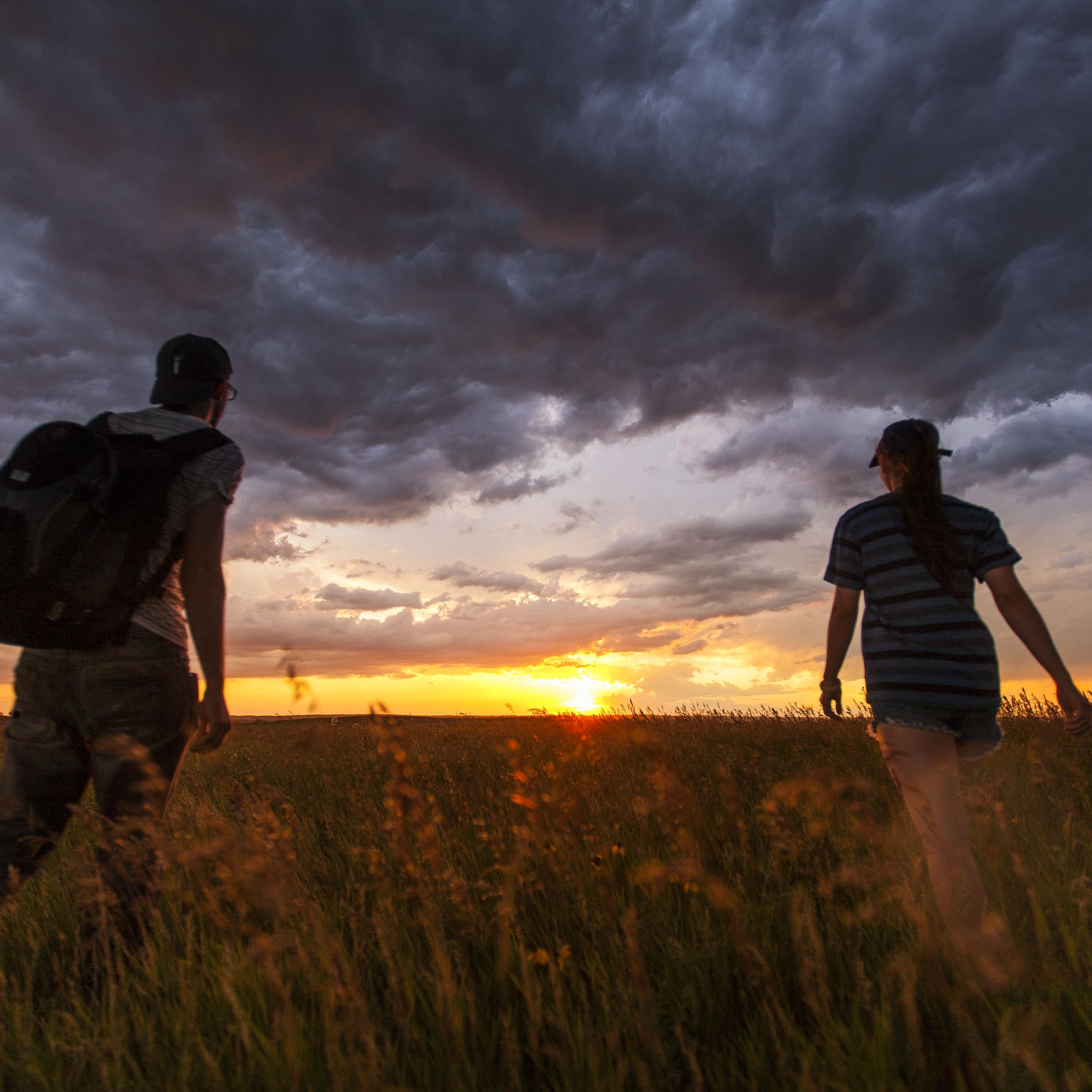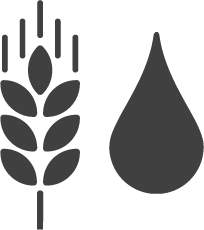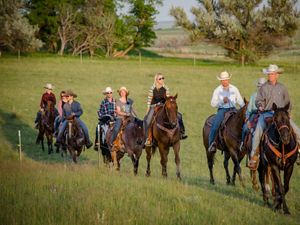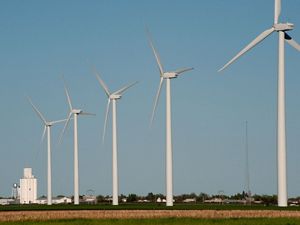
Speak Up: Conservation Policy
Learn about our policy work in North Dakota and speak up for nature.
The lands and waters of North Dakota provide critical habitat for a variety of wildlife. In fact, our wetlands are so popular with nesting waterfowl they have earned the state a reputation as “the duck factory of North America.” These wetlands, commonly called prairie potholes, are scattered among the vast grasslands that have long been home to an extraordinary number of plant and animal species. The natural productivity of our lands and waters has also enabled a robust agriculture economy, with farmers and ranchers producing canola, soybeans, honey, beef and much more.
Speak Up for Nature!
Take these three actions to start becoming a powerful advocate for nature.
Learn moreHow Policy Helps Advance Conservation
The Nature Conservancy strives to advance policy solutions in North Dakota that work for people and nature. Just like our conservation efforts on the ground, our policy work is guided by science.
We work in partnership with business and industry, with government leaders at the local, state and national levels, and with North Dakotans from all walks of life to advance conservation.
Working across borders, aisles and sectors, TNC’s mission is to conserve the lands and waters on which all life depends. With a nonpartisan approach and a commitment to collaboration with local partners, we can achieve a future in which nature and people thrive together. But we won’t be able to do it without you!
Get involved by learning more about our policy solutions, discover how you can use your voice to make a difference and speak up for nature with your lawmakers.
Our Priorities
-

Protect Healthy Lands & Waters
North Dakotans value the great outdoors, and we need to take action to conserve our clean waters and healthy lands.
-

Advance Biological Carbon Capture
Wetter wet years and drier dry years have been increasingly affecting the state’s people and economy. Nature can help us capture more carbon and make our communities more resilient.
-

Support Regenerative Agriculture
Growing global demand for food will put more pressure on North Dakota’s ag producers. Together with farmers and ranchers, we can increase outputs while improving the health of the land.
Capitol Blog
Updates from the North Dakota Legislature

March 26, 2025
In the first half of the legislative session, about 70% of the bills introduced passed out of their house of origin and were sent across the hall for consideration in the other chamber. Among those that did not pass was a bill defeated in the House of Representatives that seriously threatened conservation by limiting landowners’ rights to manage their land for benefits like clean water and wildlife habitat.
When lawmakers returned for the second half of the legislative session at the start of March, committees got to work reviewing the bills that had successfully passed out of the other chamber. Among those bills, The Nature Conservancy supported legislation to improve the administration of a program that helps offset the habitat impacts of energy development. We’ve also offered support for a study examining water management by watershed boundaries instead of political subdivisions.
We were also glad to join fellow conservation and outdoor recreation organizations for Outdoor Day at the Capitol in February, where we connected with lawmakers and staff about the benefits of investing in conservation and enabling strong partnerships with private landowners.
February 20, 2025
Legislators hit a 15-year high of bills introduced: 1,073 and counting! Many of these bills relate to our priorities for nature in North Dakota. Of note, lawmakers have taken up bills on the use of voluntary land protection agreements to offset the effects of energy development, assessing land value based on its actual use, administration of the state’s Outdoor Heritage Fund, reclaiming abandoned mine lands, and increased funding for waterfowl habitat. Every bill receives a committee hearing and a vote on the floor, and lawmakers are keeping a steady pace to ensure that each bill moves through the process before crossover at the end of the month—the date by which bills must be acted on in their house of origin.
January 21, 2025
The North Dakota Legislative Assembly convened on Jan. 7 to kick off the 69th Legislative Session. Tell legislators you care about conservation action!
With more than 700 bills already introduced and more on the way, legislators are hard at work sifting through legislation and scheduling hearings to make the most of their allotted 80 legislative days.
Newly inaugurated Gov. Kelly Armstrong gave his budget address on Jan. 15, presenting a $19.9 billion budget for the 2025-2027 biennium. In addition to ongoing funding for state natural resources agencies like the Game and Fish Department and the Parks and Recreation Department, his budget includes nearly $1 million in one-time spending to address the spread of emerald ash borer, an invasive pest that devastates North Dakota’s most common tree species.
As the session gets underway, TNC is engaging on bills pertaining to voluntary land protection agreements, water management, energy production and transmission, environmental reclamation and funding for conservation and habitat management.
Protect Healthy Lands & Waters

TNC has helped protect natural areas in North Dakota since 1971. We work with partners and private landowners to drive more resources toward the conservation of our state’s lands and waters.
Meaningful state investment in conservation has never been more important. Much of North Dakota’s historic grasslands have been converted to other uses, putting the rich biodiversity of the prairie at risk. Healthy, connected ecosystems are vital to sustaining the state’s iconic wildlife and the communities that depend on our strong outdoor recreation economy.
More about Land & Water
-
North Dakota's Outdoor Heritage Fund, established in 2013, funds conservation efforts around the state by providing grants to state agencies, nonprofit organizations and Tribal and local governments. The fund was created to benefit public and private lands by expanding wildlife habitat, improving water quality, building soil health and enhancing outdoor recreation opportunities.
-
Achieving the clean energy build-out necessary to reach carbon emissions goals will require quadrupling our renewable energy capacity in the United States by 2050. In North Dakota, we have plenty of opportunity to lead on energy development for the future—but how we do it matters. Our Site Renewables Right tool shows where renewable energy can be developed while still conserving important wildlife habitats and natural areas at the same time.
-
Biodiversity refers to the vast array of life all around us, from the microscopic to the megafauna. From the food we eat to the air we breathe, our way of life depends on the interplay of millions of organisms in diverse ecosystems. This variety of life, the communities they form and the habitats in which they live comprise the extraordinary biodiversity of our planet. Watch this short video to learn more.
Advance Biological Carbon Capture

The most natural solution to store more carbon is widely available, relatively inexpensive and ready to grow. In the effort to reduce carbon emissions, nature offers a solution through photosynthesis. North Dakota’s vast natural and working lands already capture and store an immense amount of carbon in plants and soil. State leaders should support these nature-based strategies, which by themselves can capture up to 31% of the state’s annual emissions.
Wetlands, grasslands and farmlands can all be managed to more effectively capture and store carbon, while supporting biodiversity and improving water quality across the state. Additionally, advancing biological carbon capture on working lands will elevate farmers and ranchers as conservation leaders while making their lands more resilient to extreme weather.
More On Nature-Based Solutions
-
Weather changes over the next century will likely include overall drier weather with severe drought conditions, and with frequent intense rain and flooding when precipitation does occur. Severe droughts can increase livestock feed costs by up to 50%, pressuring ranchers to sell off portions or even the entirety of their herds. And increased occurrences of heavy rain or snow events and ensuing flooding could cause widespread damage to infrastructure around the state.
-
Biological carbon capture leverages biological mechanisms that process and store carbon and other greenhouse gases, most notably through photosynthesis. North Dakota’s grasslands, forests and farms capture and store carbon as they grow, in a process called biological carbon capture. Read our report to learn about the conservation, restoration and improved management actions that can offset nearly a third of the state’s carbon emissions.
Advance Soil Health

Agriculture is a central pillar of North Dakota’s economy and one we should protect. Smart land management will ensure future generations will be able to farm and ranch profitably. Regenerative agriculture can build soil health, improve water quality, restore wildlife habitat and even store more carbon. Adopting strategies like reduced tillage, cover cropping and rotational grazing isn’t just good for the environment—it also can make farm operations more economically and environmentally viable.
We’re committed to working with leaders in agriculture and government to make sustainable land management more accessible and achievable across North Dakota. Creating policy that incentivizes regenerative agriculture will help farmers and ranchers and keep the state’s agriculture economy strong.
About Regenerative Agriculture
-
The value of North Dakota’s agricultural production has exceeded $18 billion in recent years, supporting tens of thousands of jobs on more than 26,000 farms. A strong agriculture industry is key to maintaining the health of the state’s economy, and regenerative land management practices can help protect our investments and our way of life.
-
Healthy soil is not a given. Without proper management, soil can become degraded, leading to unproductive fields and diminished profitability. Soil health practices—like planting cover crops, minimizing tillage, rotating crops and improving nutrient management through precision technology—are critical to making crop land more resilient and productive.
-
North Dakota’s grasslands are at risk of being lost to conversion and poor management, but regenerative grazing can help restore them. Managing rangelands through strategies like rotational grazing can mimic historic cycles of disturbance while improving water quality, creating habitat for wildlife and storing more carbon in the soil. These practices make a big difference, and local ranchers are already leading the way.
Policy is an essential tool in the effort to conserve the nature we all love in North Dakota. Stay up to date on conservation news in the state and speak up to let your lawmakers know why nature matters to you!
We Can’t Save Nature Without You
Sign up to receive monthly conservation news and updates from North Dakota.



